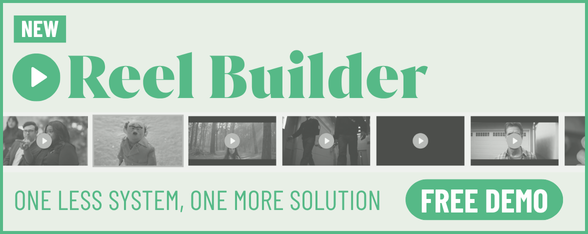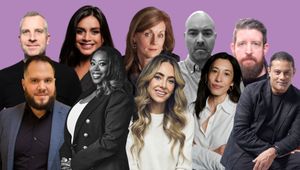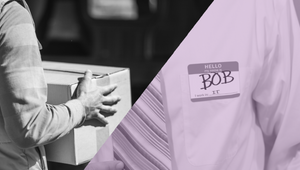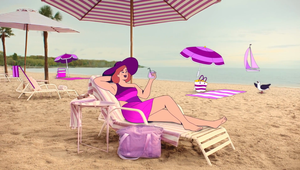
Adrian “GQ” Volcinschi and the Return to Honest and Meaningful Storytelling

Adrian “GQ” Volcinschi is a self-shooting director, originally from Romania, with a background in photography and videography – specialising in fashion and advertising. Highly technical and detail-focused, he is powered by coffee and obsessed with all things green. And drones.
He sat down with LBB to discuss the demands of the Gen Z audience, creating brand stories and his early mentors.
Name: Adrian Volcinschi – AKA GQ
Location: London
Repped by: Oliver Agency
Awards: Most notable recent — Gold at the FAB Awards (Social Media Category)
LBB> What are some upcoming projects that you're excited about? Tell us a bit about them?
GQ> One of the projects I’m most excited about is a summer campaign for a non-alcoholic drinks brand, focused on experiencing the art of living in the south of France. Capturing this is a dream for everyone involved. It’s a week where we come together with everything we need to capture those moments we all long for.
I’m also working on a few campaigns with brands that genuinely care about sustainability and ethical living – things that matter a lot to me personally.
At this stage in my career, I’m really focused on collaborating with brands that resonate with my beliefs and visual sensibility.
LBB> What excites you in the advertising industry right now, as a director? Any trends or changes that open new opportunities?
GQ> The shift toward sustainability is a big one. Gen z is leading the change – demanding more transparency, ethics, and authenticity from the brands they engage with. That pressure is reshaping the industry in real time, pushing brands to lean into more honest, meaningful storytelling.
As a director, that opens up space to make work that doesn’t just look good, but stands for something. It’s not just about selling anymore – it’s about connecting with values that matter.
Being part of that shift, watching brands evolve with the world’s changing consciousness, is genuinely exciting.
LBB> What elements of a script sets one apart from the other and what sort of scripts get you excited to shoot them?
GQ> It might sound simple, but a strong narrative always stands out to me. I get excited by scripts with real depth – something that goes beyond buy this and taps into something more meaningful.
I believe branding should build emotional resonance, not just drive short-term sales. It’s the long game that matters – how a story shapes the way people feel about a brand over time.
LBB> How do you approach creating a treatment for a spot?
GQ> I always start with the brand. Having worked closely with branding agencies, I’ve learned how important it is to understand not just what a brand sells, but what it means to people.
I dig into its history, its ethos, and its voice. I look at where it started, what it set out to do, and how people have responded to it over time. Just like with people, a brand is the sum of everything it’s done.
I also look at where the brand sits in the wider landscape: its competitors, its category, and what sets it apart. Whether it’s long-established, brand new, or still emerging, I try to understand how it wants to be seen and what makes it different.
From there, the treatment becomes an extension of the brand itself. Every visual choice is shaped to reflect and elevate its identity, communicating something that feels both true and memorable.
LBB> For you, what is the most important working relationship for a director to have with another person in making an ad? And why?
GQ> The creative director, without a doubt.
They hold the idea, the meaning, behind everything we see. Until I fully understand the vision in their mind, I can’t make the right technical and visual decisions to bring it to life.
Many of the projects I take on are under £100k, which often means I’m not just directing but also working as the DOP. That overlap makes early alignment with the creative director even more crucial. It’s a relationship that grounds the entire process. A lack of shared vision weakens the outcome.
LBB> What type of work are you most passionate about – is there a particular genre or subject matter or style you are most drawn to?
GQ> I’ve always moved between fashion and advertising. That mix is where I thrive. In practical terms, you’ll often find me on shoots that involve both products and models. The beauty of what I do is blending these elements together and these days, I’m especially drawn to brands with an ethical presence.
One I’d love to shoot for is Lucky Saint. I’ve personally made the switch to non-alcoholic beer and it’s exactly the kind of brand that aligns with where I am right now – both professionally and personally.
LBB> What misconception about you or your work do you most often encounter and why is it wrong?
GQ> That it’s glamorous. Sure, sometimes we shoot in beautiful places, but what people don’t see are the late nights obsessing over kit, backups, batteries, lenses and so on.
The job is 20% glamour, 80% grit. But the joy is in the craft, the crew, and the stories we get to tell long after a job has been completed.
It’s about the journey, the experiences, the people we meet, and the incredible things we get to do for a living that we never imagined we would. It’s not about the glamour, it’s about the passion and dedication that drives everything we create.
LBB> What’s the craziest problem you’ve come across in the course of a production – and how did you solve it?
GQ> The craziest problem I’ve faced? Not having the right cable for one of the lights. I had to find a solution. And fast. I ended up ripping out the cabling from one of those massive corporate meeting desks and “borrowed” a cable. Somehow, I pulled it off. All of this while the client was on set. The best part? No one had a clue what I was going through. Everyone thought everything was under control. And in the end, the job was a success. That’s the thrill of what we do.
LBB> How do you strike the balance between being open/collaborative with the agency and brand client while also protecting the idea?
GQ> This is the balance every director has to learn.
You start with a clear vision, then the ‘small’ client notes roll in: “Let’s show the product earlier,” “Can we hold the logo longer?” – and soon, the idea starts to unravel.
My approach is to stay open, optimistic, and collaborative, while gently steering things back to the essence of the concept. It’s about compromise, but never about dilution.
By the time the shoot date comes, you must channel all the enthusiasm you had when the idea was first conceived – and then some – to bring it to life, even better than anyone expected.
Staying true to the core of the idea. It’s about navigating those requests while ensuring the essence of the concept remains intact.
LBB> What are your thoughts on opening up the production world to a more diverse pool of talent? Are you open to mentoring and apprenticeships on set?
GQ> I’m all for it. I had incredible mentors early on, people who shaped my confidence and approach. I believe we should always be passing that knowledge forward.
After graduating, you leave with the sense that you’re ready for everything life throws at you. It gives you the confidence that you’ve done what’s needed to be fully trained. But in reality, it only takes a short amount of time in the field to realise how much more there is to learn.
For me, it took just two weeks of assisting commercial photographer John Ross to learn more than I had in three years. But more importantly, it taught me the value of passing on information. The best we can do is be as good as we can and then, by the end of it all, pass that knowledge to the next generation. That way, they don’t have to reinvent the wheel or start from scratch, they can build on what’s already been learned.
Equally, during my first years of university, I was fortunate to have John Wyatt Clarke as my guide. He gave me the confidence that I’d made the right choices and helped me understand how to navigate the industry. His guidance was pivotal in shaping my career and I’ll always be grateful for how he helped me through those early years.
I still learn from others and we always make it a point to have interns and fresh talent on set as often as possible. It’s all about sharing knowledge!
LBB> Your work is now presented in so many different formats - to what extent do you keep each in mind while you're working (and, equally, to what degree is it possible to do so)?
GQ> These days, clients expect both photography and video, with multiple angles, sound, lighting, everything, really, while making sure it works in any ratio you can think of. Oh, and all of this needs to happen in one day.
We get used to it, to some extent. Over time, it just becomes a habit. We still believe the original ratio in which the idea was conceived works best, but we’ve learned to be more efficient in our approach. Pre-planning helps ensure that everything runs smoothly. The key is understanding how to make sure what we create works across different formats, all while maintaining the integrity of the original concept. It’s about being adaptable and learning from every project.
LBB> What’s your relationship with new technology and, if at all, how do you incorporate future-facing tech into your work?
GQ> I’m a photographer at heart and I developed a strong skill set with lighting, which eventually led me into videography, mostly in the commercial space. I think this is what it means to adapt, what I call embracing change. Just like some photographers once struggled to transition from film to digital, we're now facing a similar shift with new technologies.
Right now, I’m working with James Corlett, our head of moving image tech, on building a compact, eco-conscious virtual production setup – something that maximises visual impact while minimising footprint.
When it comes to AI, we’ve been on the forefront for a while. As a team, we’ve tested every available tool and we’re invested in using AI as a creative partner. Not to replace us, but to help us go further, improve and evolve our work.
We have Rod Sobral leading the charge for us, he’s like our Christopher Columbus when it comes to AI, constantly exploring new frontiers.
Our team sees it as a way to expand the toolkit, not erase the craft.
LBB> Which pieces of your work do you feel show what you do best – and why?
GQ> Showcasing my work can be tricky, as I’m not one to stay on top of updating my portfolio. For years, I’ve relied solely on word of mouth for work. Some of my favourite pieces are editorial, which are now hard to find online.
I’ve been fortunate to shoot alongside Rob Milton for a few years, the art director behind Cyclist Magazine. Editorial work holds a special place for me, it’s not about the money, but the satisfaction of the craft.
One piece I’m particularly proud of is my first magazine cover in 2015 for Computer Shopper. It may not be my best work, but it marked a milestone I’ll always look back on with pride.
I’ve also been the sole photographer behind the visuals for Untitled Drinks, featured on their Instagram and website. Collaborating with Marta from Little Casa Studio to craft a cohesive brand from scratch is something I’m especially proud of.















